Share
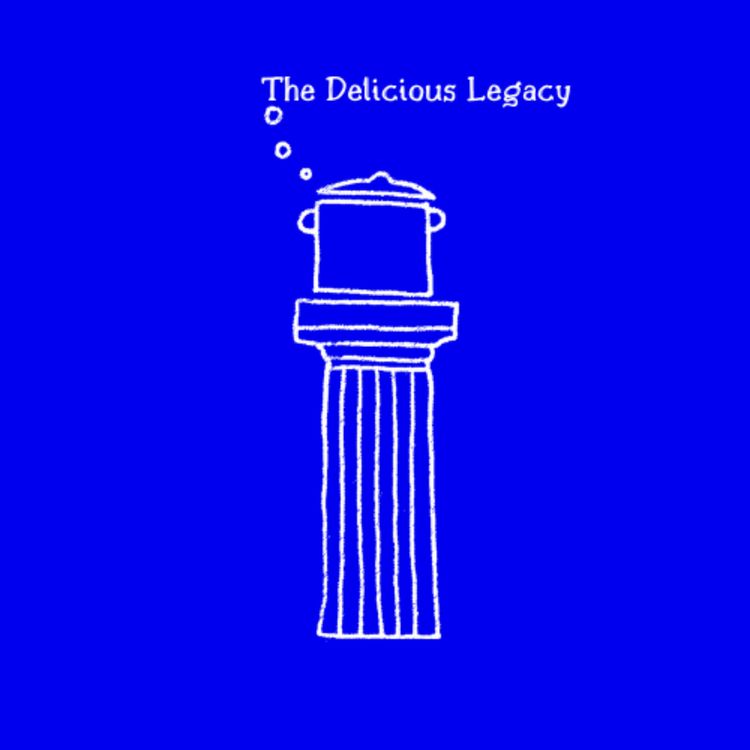
The Delicious Legacy
The Galvanising Garum
Apparently the first recorded fish sauce was produced by the ancient Greeks of the Black Sea colonies. Clearly the abundant fish resources of the Black Sea played a role in the production of this extremely popular condiment!
The sauce we know from Martial's verse - "here is lordly garum, a costly gift made from the first blood of a still-gasping mackerel!" was almost certainly a table condiment and made from blood and viscera of very fresh fish. Sometimes handled by the diner and used in relatively small amounts over already cooked food. (Sally Grainger 'A New Approach to Roman Fish Sauce' -2007)
The other more commonplace kind of sauce was called liquamen and was used in the kitchen by the cook to add salt and other more complex flavours to most dishes, just as we add salt during cooking. This was made using various kinds of whole small fish which were then mixed with salt and left to dissolve and ferment for up to three months. The resulting liquefied fish was removed from its bone and shipped all over Mediterranean in special amphorae. This whole -fish sauce is very similar to the Thai fish sauces so popular today! Roman fish sauce was NOTHING like modern anchovy paste; using the latter has been the downfall of many an attempt to recreate ancient recipes! ( Sally Grainger -The Classical Cookbook)
Fish sauce was manufactured at factory sites along the coast; these were typically beside a beach or a harbour. The fish was only a few hours from the net when the process began. These sauces cannot and shall not be seen as a rotten decaying substance! What took place was not bacterial putrefaction (which, given the high proportion of salt would be impossible) but enzymic proteolysis, a process in which the enzymes in the viscera of the fish convert the solid protein into a liquid form. The viscera is therefore essential to the process; without them the protein does not dissolve.
What the modern gourmet has to understand, and probably some only know too well from modern experience, is that there was not a single Garum sauce. As always there was the elite one, one for commoners and many other versions in between. For example, when Martial describes this sauce being "made from the blood of a still breathing mackerel " it therefore implies this was a black and bloody sauce. Or, the surviving Greek recipes for fish sauce also affirm the importance of the distinction between blood/viscera sauce and one made from whole fish. As we see things can get a little bit complicated when we muddle through the murky waters of ancient gastronomy!
One could buy aged elite black mackerel garum, ordinary black tuna garum, elite liquamen cooking sauces made from mackerel or cheaper cooking sauces made with a mixture of clupeidae and sparidae, or a tuna or mackerel muria, both of which could also be aged or new. All of these products could also come in second or even third grade versions.
The expensive and intensely- flavoured blood sauce would be lost in the cooking process and wasted, needed to be seen by the gourmet to be experienced, valued and discussed. Therefore we can conclude it would have been the table sauces handled by the guests or the host himself.
From modern South East Asian cuisine we learn of a fermented squid blood viscera (and ink) sauce that is used today in Japanese cuisine. It is known as ishiri and is used as a finishing sauce for sushi as well as cooked food. Its taste neither fishy nor salty, and smells of the iron compounds from the blood. Japanese cuisine also has a whole-fish sauce called ishiru and many dishes are prepared with both i.e the whole fish sauce is used for cooking and the blood/viscera sauce finishes the dish. This sauce is truly fermented with bacteria and low salt. It is quite remarkable that the Japanese word for viscera is gari!
In Roman cuisine, the use of garum was enriched with different combinations of the sauce - with honey (meligarum), vinegar (oxygarum), wine (oenogarum), water (hydrogarum), or dry spices (such as dill, oregano, coriander, celery, or even mint). These sauces were used as condiments for literally everything: from meat and fish to vegetables, salads, desserts, bread, and wine dipping.
The best way to use it in all recipes is thus; Take a litre of grape juice and reduce it by half, cool it and blend a bottle of Thai nam pla fish sauce with it. My favourite recipe that includes garum is "Honey-Glazed Prawns with Oregano and Black Peppers" a relatively simple dish, which I've made countless times as a starter in one of my ancient Greek themed dinners!
For a decent starter for two, take 8 large prawns 15ml of olive oil, 30ml of fish sauce 30gr of clear honey, a handful of chopped fresh oregano and black pepper. Place oil, fish sauce and honey in a saucepan, then add the prawns. Sauté gently in the cooking liquor for 2 or 3 minutes. remove prawns from sauce and keep them warm, cook the liquor a little longer so in reduces by half. Add oregano, pour over the prawns and sprinkle liberally with freshly ground black pepper. Serve with crusty bread.
Similarly homemade smoked sausages with fish sauce are indeed a treat for every gourmet! mince belly of pork, pine kernels, rue, peppercorns, savory, cumin bay berries fresh parsley and simply grill them! Yum!
Music by Aris Lanaridis
https://www.arislanaridis.co.uk/
The Noma Guide to Fermentation:
Authors: René Redzepi, David Zilber
ISBN: 9781579657185
Review here: https://www.wired.com/story/noma-guide-to-fermentation-book-review/
The Classical Cookbook
Authors: Sally Greinger, Andrew Dalby
https://www.goodreads.com/book/show/1579230.The_Classical_Cookbook
Andrew Dalby:
Siren Feasts: A History of Food and Gastronomy in Greece
https://www.goodreads.com/book/show/308027.Siren_Feasts
Support the podcast on Ko-Fi and Patreon for ad-free episodes!
More episodes
View all episodes
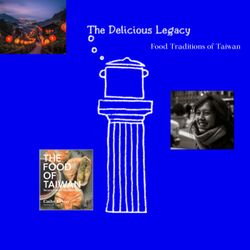
24. Food Traditions of Taiwan -Interview with Cathy Erway
54:25||Season 7, Ep. 24Hello my curious archaeogastronomers!New episode is out for your delight!An interview with food writer Cathy Erway about the foodways and dishes from the beautiful island of Taiwan!Recommendations for the week:The Library of Ancient Wisdom by Selena Wisnomhttps://www.penguin.co.uk/books/443027/the-library-of-ancient-wisdom-by-wisnom-selena/9780241519639The Ottoman History Podcast:https://www.ottomanhistorypodcast.com/The Hungry Historians podcast:https://open.spotify.com/show/2dd70WM8rXd2rMKepkbjwuEnjoy!LoveThom & The Delicious Legacy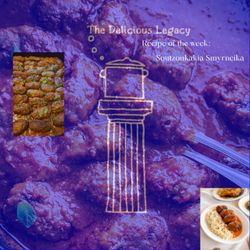
Soutzoukakia Smyrneika (Spicy meat balls from Smyrna)
13:16|Hello!Your recipe of the week on a Saturday is out! And what better dish than a Greek Sunday favourite?Izmir, Smyrni or Smyrna:One city, three names, a shared history of three thousand years! Being “born” in such a place, in the crossroads of trade, our recipe for “Soutzoukakia Smyrneika” or Izmir kofte encompasses spices valuable for trade and meat and ideas from East and West. And thus making a syncretic dish, delicious, luxurious and celebratory.Enjoy!Thom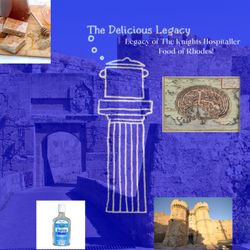
23. Legacy of The Knights Hospitaller - Food of Rhodes!
26:31||Season 7, Ep. 23Hello!Rhodes is a rich history island with a lush landscape and an illustrious past.After the fall of Acre in 1291 CE, the Knights Hospitaller last stronghold in the East Med for the next two centuries was the island of Rhodes.Rhodes is the biggest island of the Dodecanese complex, and place of trade in the eastern Mediterranean for more than three thousand years!What is 'Souma', and 'Melekounia'? And how do the Rhodians use cyclamen in their cooking?Let's find out about here food here!Enjoy!ThomThe Delicious Legacy Podcast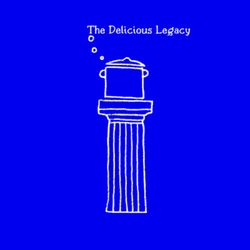
Pork, Chestnut & Chickpea Stew from the Island of Lesvos
08:09|Hello!Happy weekend.Here's our recipe of the week;A Christmas pork stew from the island of Lesvos! I cannot quite shake away the Christmas feeling...! Enjoy!The Delicious Legacy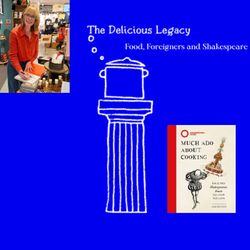
22. Food, Foreigners and Shakespeare
01:23:09||Season 7, Ep. 22Hello! New episode for all my hungry archaeogastronomers!In Act 2, Scene 2 of the Merry Wives of Windsor Frank Ford says:‘I will rather trust a Fleming with my butter, Parson Hugh the Welshman with my cheese, an Irishman with my aqua-vitae bottle, or a thief to walk my ambling gelding, than my wife with herself.’Why do certain nationalities have close associations with certain foods? And what does this tell us about early modern English attitudes to foreigners? Was this something common across all strata of society?One of the ways to explore these attitudes is to look at how foreigners are represented in plays particularly when it comes to food. I spoke to food historian and fellow podcaster Sam Bilton about this. Sam has recently released a cookbook called Much Ado About Cooking which looks at the food references in Shakespeare’s play.On this episode then the above questions and a lot more regarding kitchen technology and implements of the time, measurements and terminology in the 16th Century, best recipes and dishes are answered. So join us onto another adventure through food and history!Enjoy!The Delicious LegacyRecommendations of the week:The UK Will Soon Be Home To The Largest Oyster Reef In Europe – As Four Million Oysters Are Being Dropped Into The North Sea As Part Of A Restoration Project To Help Restore Marine Ecosystems And Clean Water:https://secretldn.com/uk-home-to-largest-oyster-reef-in-europe-norfolk-coast-restoration-project/#google_vignetteThe importance of being malted: making malt and malt sugars from cereals in the Palaeolithic. https://merryn.dineley.com/2025/12/the-importance-of-being-malted-making.html?m=1The Meaning of Borsch:https://open.spotify.com/episode/1ne63nGnDvTYgT2OFiayzf?si=c0b1449fe848458bLoveThom & The Delicious Legacy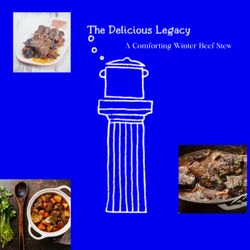
Stocking Filler! Recipe of the week a Comforting Winter Beef Stew
08:37|Hello!Your recipe of the week is out!Recommendations of the week:Sarcophagus found at Church of St. Nicholas could be the tomb of “Santa Claus”:https://www.heritagedaily.com/2024/12/sarcophagus-found-at-church-of-st-nicholas-could-be-the-tomb-of-santa-claus/154084Roman occupation of Britain damaged the population’s health:https://www.newscientist.com/article/2508181-roman-occupation-of-britain-damaged-the-populations-health/On contrarian history:https://going-medieval.com/2025/11/25/on-contrarian-history/Enjoy!Much Love and Happy New Year to all!The Delicious Legacy Podcast
Recipe of The Week Three: Kalymnos Octopus Fritters
06:01|Hello!Happy Christmas!Here's your recipe of the week this time from the beautiful Dodecanese island of Kalymnos!Enjoy!With music from Miltos BoumisLoveThom & The Delicious Legacy
21. Where Beer Began: Is the Mesopotamian Origin Story Correct & The Birth of Brewing
49:49||Season 7, Ep. 21Hello my curious archeaogastronomers!Who were the first beer makers? Why did they even made beer in the first place? Can we even find a Civilization to be the clear winner in this "race"? What's the word for beer in ancient Sumerian?What role the priests and kings plaid in this? Who even drunk beer in the ancient Mesopotamian world? All this and many more questions were buzzing through my mind.On today's episode I have as a guest the author of the book In The Land of Ninkasi: A History of Beer in Ancient Mesopotamia, Tate Paulette.Tate’s book has recently won two awards:Felicia A. Holton Book Award, Archaeological Institute of AmericaThis award is given annually to a writer or writers who, through a major work of non-fiction, represents the importance and excitement of archaeology to the general public. The work should have broad public appeal and be written for an adult lay audience in a clear and engaging style. It should convey the excitement of archaeological discovery accurately and responsibly. It should be well-researched and provide new insight for the general public. https://www.archaeological.org/2026-aia-awards-spotlight-felicia-a-holton-book-award/And he also won the Nancy Lapp Popular Book Award, American Society of Overseas Research:This award is presented to the author/editor of a book published in the last two years that offers a new synthesis of archaeological or textual evidence from the Ancient Near East and Eastern Mediterranean intended to reach an audience of scholars as well as students and the broader public.https://www.asor.org/about-asor/honors-awards/previous-award-recipients/Alright! Time for my delightful and interesting I hope recommendations for this week are the following:Disco scallops:Here’s a link:https://www.discoscallops.co.uk/A Spirit Never to Betray” before tequila and mescal there was another: David Lauer investigates the fate of a spiky ancient desert plant called sotol, and its alliance with generations of artisans who distil a fiery spirit from its heart.https://dark-mountain.net/a-spirit-never-to-betray/And finally the website https://www.ukrainer.netA community and organisation that has been researching Ukraine and the Ukrainian context since 2016, telling stories to Ukrainian audiences and broadcasting them to the world in dozens of languages.xEnjoy!Photo credits : Book Tate Paulette, Cuneiform Tablets Justin Kase Conder, Portrait Kathryn GrossmanThom & The Delicious Legacy
Stocking fillers: Recipe of the week, two: Ikarian Pampeion
06:51|Hello!Every Saturday in The Delicious Legacy podcast your freshest "stocking filler" recipe of the week is out!This time I’m travelling to the delightful island of Ikaria in the Western Aegean sea!With a simple one pot veg recipe!If you want to know more about Ikaria, read my Patreon post here:https://www.patreon.com/posts/ikaria-island-of-115744979Music by Milts BoumisLove,The Delicious Legacy